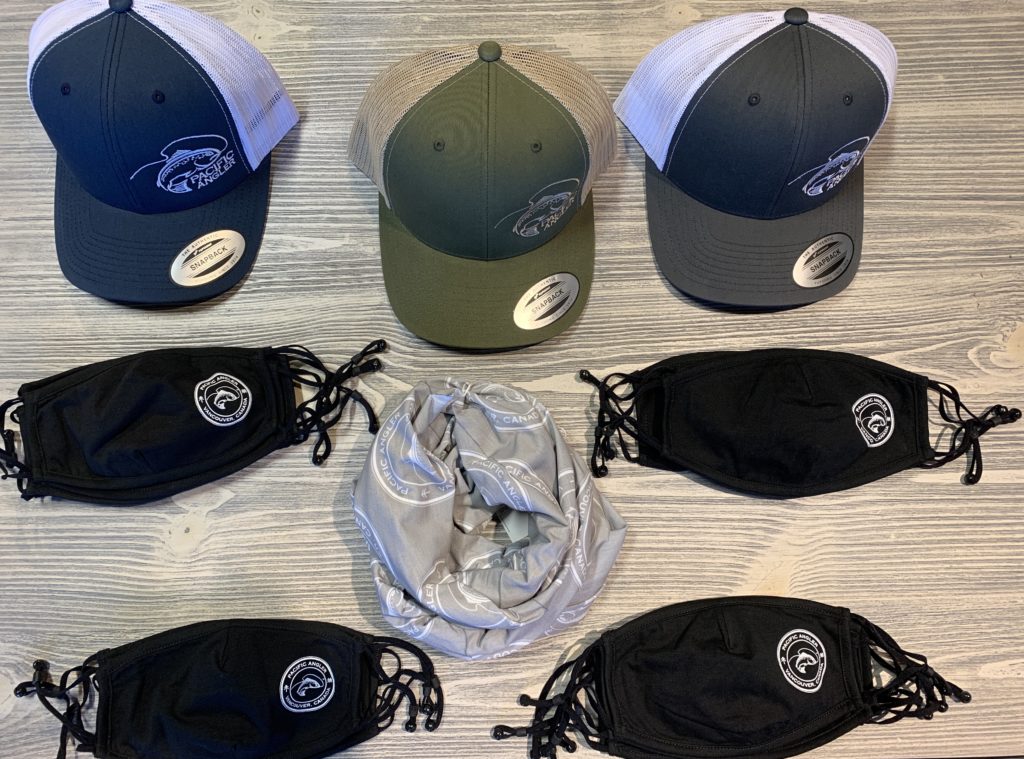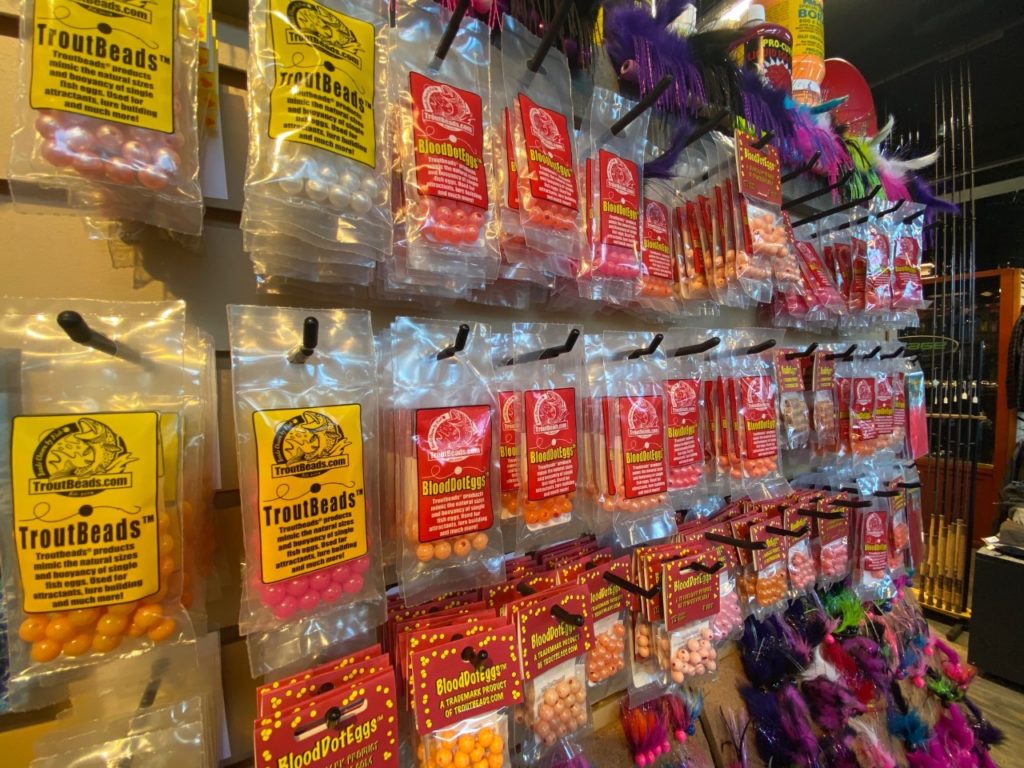OUTLOOK
The first storm of the Fall season is rolling through as we write this report. This is big news and will shuffle things up on many of our fisheries. As we write this report, most of our rivers are blown out or are heading in that direction but, when things settle, expect excellent fishing.
This week Taylor looks at the Vedder and we have some info on sturgeon fishing from Aidan. Zach has an overview of the Squamish and while it is not time to head up to the Squamish just yet we can start looking at it soon.
Jason is up north river fishing so this week Jordan has the saltwater report for you. With some of this rain fish will head up the rivers but it will also bring in some fresh fish and we had a productive day on the water yesterday.
If you’re thinking lake fishing, things in the interior are picking up. Haiden has a report from Tunkwa and it is well worth a trip to any interior lake right now.
As always, check out the video version of the report where Matt goes over it all here:
Last but not least if you’re visiting us in store, face coverings are required so please do bring one. If you need one we have disposable masks which we can provide you or if you’d like a Pacific Angler Mask or buff we have those in shop for purchase.

FRESHWATER FISHING REPORTS
Vedder River Fishing Report
So, some good news, and some bad news. The good news is that I don’t have to keep complaining about a lack of rain and low, clear water conditions. The bad news is that we got way too much of a good thing, and the Vedder/Chilliwack is BLOWN. The river isn’t necessarily all that high as of right now, but visibility is very low. All that loose clay and dirt that had accumulated on the banks, roads and especially at the Slesse and Pettigrew slides is getting washed into the drink, making the water look more like chocolate milk.

The river isn’t completely unfishable, but to say that conditions will be less than ideal is a bit of an understatement. One day it’s so low and clear that you can’t get within 25 feet of the water without spooking fish, and the next the water looks like a chocolate shake… There will still be fish around, obviously, as this rain will get all the fish that were waiting in the Fraser and the canal moving, but finding them, and getting them to find your gear, will be the issue. The solution is to do the complete opposite of what I’ve been telling everyone to do for the last few weeks – upsize your presentation. Now is the time for big gobs of roe, big Colorado blades and big spoons and spinners. Don’t be afraid to fish close to shore either, as fish will often tuck closer to the bank during muddy conditions as the water close to shore is often slightly cleaner and slower. If you’re a fly guy, run something big with lots of profile, but realize that it will probably be challenging fishing until things settle.
We don’t think the river will be very fishable for the weekend as this rain is supposed to continue until Sunday/Monday but watch the weather because forecasts can change. The silver lining here is that there should be lots of fish around when the river starts to shape up next week. The best time to hit it would be when the river is on the drop and visibility gets to about 2 feet. The fish will still be able to see your gear, but they’ll be much less spooky. There will be fresh fish throughout the entire system after things clear up, both Coho and Chinook, and they should be much more likely to bite than they were before the storm. If you do head out this weekend, please be careful. High, dirty water can be dangerous. Use common sense and stay safe out there.
Taylor Nakatani
Squamish River Fishing Report – Season Primer
The Squamish river system is one of our favorite rivers to fish from the Fall through to the Spring. Usually by now I have been able to get up scouting a few times to see what the river is looking like, but like most things in 2020 that is not the case so far this year. We are still a few weeks away from the Squamish coming into shape, so this report is a primer to get you ready for when she finally comes into shape. The weather is still quite warm in Whistler and this is the area that you will want to keep an eye on. As it sits right now, she is a touch high and from the couple of friends that I have spoken to that have gone to check it out the water is dirty, dirty, dirty.

Usually we can find some good water to fish in the Mamquam and Cheakamus rivers when the main stem is chocolate milk but the same can be said for those areas as well right now, dirty. The forecast for this weekend doesn’t look good either. The storm that is supposed to hit is just going to blow out the river and cause it to be even higher and dirtier. We usually like to see the river graph at Brackendale in the 2.2-2.7 range; when it hovers around 3, I have had some excellent fishing but it’s on the verge of blowing out at that level.
If you haven’t fished the Squamish River before keep in mind that there is a bait ban in place all year and the entire system is catch and release, unless you can find a hatchery marked coho in which you are allowed to keep 1 per day. In all my years of fishing this system, I can probably count the hatchery coho that I have caught on one hand so don’t expect to be whacking and stacking. Squamish has a pretty popular pink salmon run every odd numbered year (2021, 2123, etc), and a good amount of coho and chum salmon return each year as well. Our favorite fish to chase up there are the Bull and Rainbow trout and the elusive cutthroat trout.

You can fish the Squamish on gear or on the fly. Most gear anglers will twitch jigs or throw spoons on a spin set up but drifting jigs, beads and blades is also very effective. For the fly anglers, we love nymphing trout beads behind the pockets of salmon for trout as well as swinging big flies and stripping small flash flies for Coho and Chum.

The Squamish is a very large system and lots of it doesn’t have cell service. Make sure to tell people where you are going and have a plan in place if things go sideways. There is loads of wildlife up there which I love; I’ve seen eagles, deer, elk, bobcats, black and grizzly bears as well as a pack of wolves. Make sure you have bear spray with you just in case; I have yet to use it but it does give a bit of peace of mind. Since it is such a large area one thing to keep in mind to up your chances of success are to keep moving. The fish have a lot of area to hang out in so the more water you cover the more of a chance you will have of finding them. It’s not uncommon to hike 10km in a day and not get any bites so keep moving, eventually you will find them. Fish quick but also fish effectively. Put your best casts into the beat water and you will be sure to find fish.

We will keep an eye on this system and hopefully poke around once this big storm passes to check things out. As I mentioned above, we are still a few weeks out and we need things to start cooling down up top before the river comes into a fishable shape. Keep an eye on the Whistler temperatures and once they start to cool down to the mid to low single digit temps it will be game on. Come on into the shop as we have all the tackle you need for this fishery whether you are a total beginner or have been doing it for years. We all have a few tricks up our sleeves
Zach Copland
Sturgeon Fishing In The Lower Fraser
Over the past month, I’ve been heading down to the Fraser to try and track down everyone’s favourite river monster: sturgeon. Now whether you’re fishing from shore or a boat, this is one of the most accessible fisheries in Vancouver. There are sturgeon nearly everywhere in the Fraser river, and they tend to congregate in deep holes. When looking for your sturgeon spot, always look for depth. The Navionics website is a fantastic resource for researching a nearby area.
I’ve been focusing most of my efforts in the middle arm of the Fraser with middling success. The hot bait has been salmon bellies and roe, with the odd fish coming on eels and eulachons. On Tuesday, the only bites I got were within 15 minutes of each other, just before low tide.

The rig I use is very simple, big circle hooks and 6-16oz weights depending on current. I like to use circle hooks as they reduce the chance of gut hooking the fish. If you’re getting lots of pickups on your bait with no hookups, swap over to a standard big river bait hook. Make sure to use 150 lb sturgeon leader as to not cut up the mouth of any fish you hook into.

So, if you’re looking for another species to target while our river systems are blown out, try taking another species off your fish-it list.
Aidan Munro
STILLWATER FISHING REPORTS
Interior Lakes Fishing Report
I had the luxury of taking a trip with my dad out to Tunkwa lake for 4 nights last week. Fishing was solid, and staying in one of the cabins at Tunkwa Lake Resort made it even sweeter. We had a huge dump of rain one day but other than that the weather was a steady mix of sun and light clouds. Temperatures did drop down around to 10 degrees and even got down to below 5 degrees one night. This made for good fishing conditions as warm days and cool nights are the combination we are looking for during Fall lake season. We tried our luck with a variety of different approaches ranging from casting small spinners, casting a worm under a float, trolling gear, trolling flies, and casting and stripping flies close to shore. Our best producer proved to be casting and stripping patterns near shallow weed beds and shorelines. We had a lot of fun playing with different patterns and strip speeds.
Our go to flies for the weekend were along the lines of small olive or brown leech patterns and pumpkin head leeches. One fly that stood out and produced really well for us was a pumpkin head variant in blue and maroon. A nice blue bead, blue flash body and maroon hackle/tail put us on a lot of fun fish. We didn’t get into anything big, but the fish were definitely there and we heard reports of a couple fish caught in the 5 – 8 lb range. The fish were very active and jumped more than I’ve seen in a long time. Overall, I’d definitely recommend adding Tunkwa to your bucket list because it no doubt left me wanting more.

The end of September and first week of October are showing daytime temperatures between 18 and 23 degrees, and nighttime temperatures dropping to between 8 – 12 degrees. These are pretty good spreads in temperature that should produce good fishing. Stock up on your staples like pumpkin heads, other leech patterns, scuds, boatman and dragons before getting out there!
Tight lines,
Haiden MacDonald.
SALTWATER FISHING REPORTS
September brings us a unique time of year: there’s still fish to be had off of the Fraser, with the chinooks transitioning to coho, along with a few chum. Though still pretty early, there have been a few reports of chum being caught by anglers down at Sandheads. Coho numbers should increase as September turns into October. The rain this week will move fish up the rivers but at least as we are writing this report the fishing continues to be good. With dry weather espected for next week, we should have a few more weeks of good fishing.
Bait is still key, and is always a great choice when targeting river mouth salmon. That said, when it does turn into a coho fishery, your white hoochies will come in handy. Standard glow and UV teaser heads in all your favourite colours are still the ticket. UV and Glow flashers in chartreuse, green, and purple are all popular pairings as well.
Depths are still in the top 60ish feet, but don’t be scared to go a little deeper when the tide is ebbing, as fish will often sit down below the heavy outflow from the river.

Bait is still a great choice, and will be taken by both the coho and chinook. This fishery usually fairs better on the flood, with fish often times being found farther West and off-shore a little more during the ebb.
This is also a great time of year to check out the Bell Buoy and Mile Markers. Fished on the flood as well, it provides a second choice if the Cap mouth is too congested. There have been some good reports from anglers who have dropped in and worked the contours, working their way back and forth along the different depths. Working the contours until you find which shelf they are on can often be the key, with one contour sometimes being ‘the one’. Watch out for crab traps if working this area is it can sometimes be like a mine field.
Jordan Simpson


